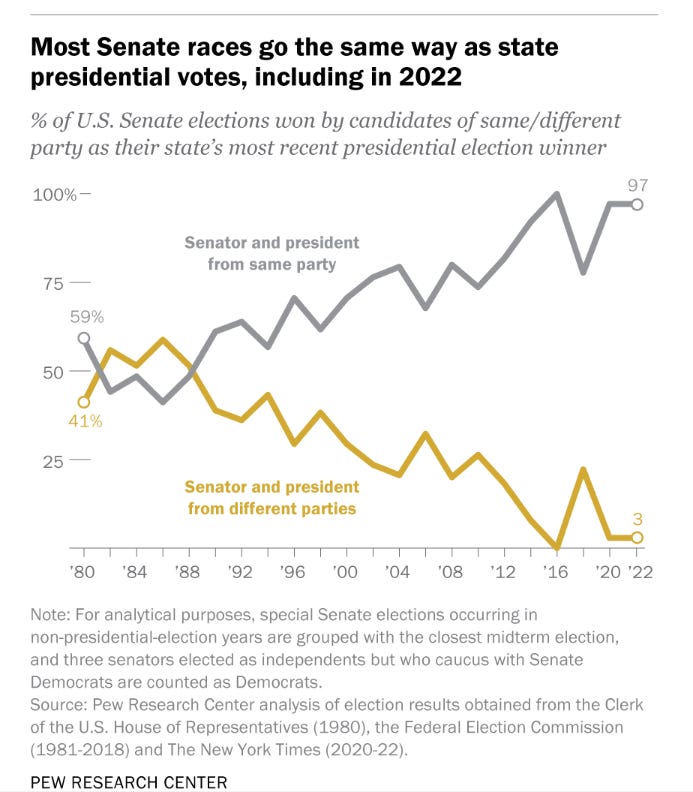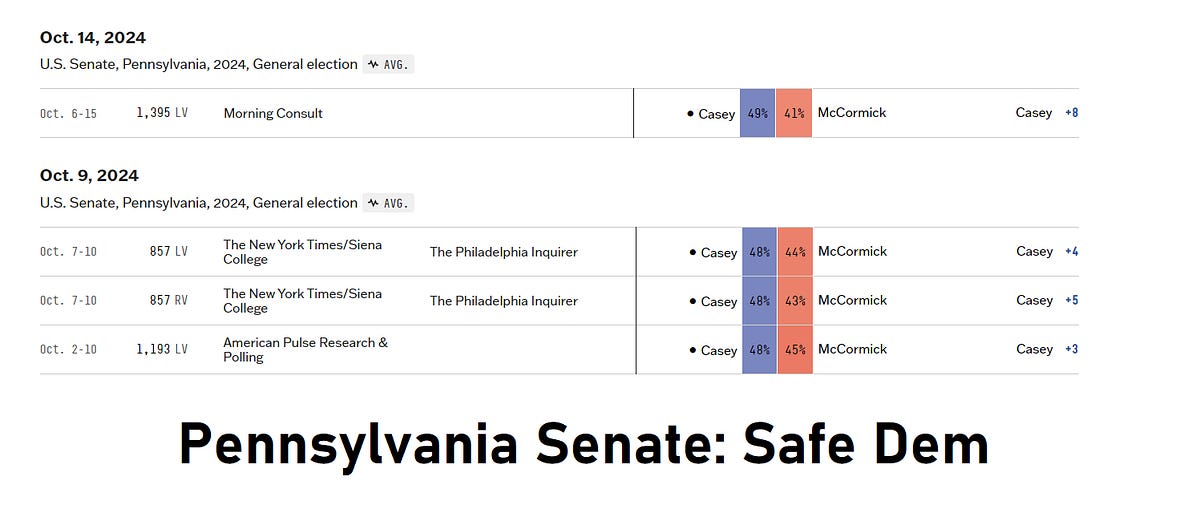Polarization Reverse Coattails: GOP Will Win Montana. Trump Will Lose the White House
What you sow.... is..... what you reap!
The reason the GOP is going to win Montana this year by defeating incumbent Democratic Senator Jon Tester will be the same reason Kamala Harris will defeat Donald Trump in the presidential contest.
For eight years, Donald Trump sowed division. He told his followers to hate the other side, not treating them as opposition but as enemies. “Don’t compromise,” he shouted to his crowds — from rooftops, down escalators, and anytime he could find waving hands. How many times has he said the Democrats would destroy the country?
In 2020, he warned that President Biden would cause a depression and abolish the suburbs. Yet, the suburbs are not destroyed. The U.S. economy continues to grow after the COVID pandemic, at a rate far better than any in the G7.
He didn’t succeed in lifting the US economy to the next level, but he did succeed in accelerating the polarization of the electorate. In 2022 midterms, all senate election results matched the states’ presidential votes.
Now, compare the data point presented above with the one from Pew Research below.
In earlier decades, mismatches between presidential and senatorial elections were more common. In 1980, for instance, Democrats won 12 of the 31 states that held Senate races that year and were carried by Republican Ronald Reagan.
The mismatch rate, the percentage of Senate races won by an opposite-party candidate to a state’s most recent presidential vote, has dropped from 41% in the 1980 to practically nothing in 2022.
Polarization plays a significant role in campaign strategy. Among all the Senate seats targeted by the GOP’s campaign arm this year, two races stood out: Montana and Ohio. Both seats are currently held by Democrats, yet Donald Trump won these states decisively in 2020, and he’s expected to win them again this year.
Was GOP illogical?
No. They weren’t.
The only way a Democrat can win a Senate seat in a state that is likely to vote for Donald Trump is through the candidate’s star power or by facing an extraordinarily weak opponent. Take Mark Robinson in North Carolina’s governor’s race, for example. It’s a state where Republicans should win statewide races, yet they are trailing the Democrats by ten points.
This situation has less to do with the Democrats and more to do with Mark Robinson being unpalatable to large swaths of voters across the state. Unique circumstances are needed for voters to break from party lines and choose one party for the Senate/statewide race and another for the presidential race.
When we apply that yardstick, only Arizona stands out. Republican candidate Kari Lake is an extraordinarily weak candidate. I’m not surprised to see her trailing Ruben Gallego by mid to high single digits since polling began in Arizona.
But the same can’t be said for other states. Nevada, Wisconsin, Michigan, and Pennsylvania are all likely to align in the same direction this year, voting for the same party in both the Senate and the presidential races. Montana will do the same.
Democratic Senator Sherrod Brown (Ohio) might be the only exception, defying the trend. I’m actually quite surprised by his strength in Ohio, which must be attributed to his own efforts. It’s no easy task to swim against the MAGA tide in Ohio while wearing a blue shirt. Still, I am very cautious about Brown’s chances in Ohio; it can easily go wrong.
Let me put it this way: the Dems are going to lose Montana this year, but they have a fighting chance to win Ohio. That’s how I see it, and the reason is simply the way Donald Trump polarized the country. The number of voters who choose two different parties — one for the Senate and another for the presidential ticket — is very small.
The nonsense he sowed in the minds of Americans is also going to hurt him in the presidential race.
In Nevada, the presidential race appears to be tight, but the Senate race is clearly leaning toward the Democrats. One GOP-leaning pollster even had the Democrats leading by a significant seven points.
In Wisconsin, the Republicans spent over $100 million to try to undermine Democratic Senator Tammy Baldwin’s lead. It worked for a while; the race tightened, but it has now returned to where it should be. Baldwin is breaking out once again.
In Michigan, Slotkin has been surpassing the critical 50% mark. I’ve seen her do that a few times. When you keep knocking at the doors of 50, it’s clear the race is in your favor.
The GOP tried really hard to prevent Pennsylvania from going blue this year, but Senator Casey is one tough nut to crack. There are tons of Republican pollsters attempting to manipulate the numbers, but if they were so confident, why didn’t they invest $100 million in Pennsylvania instead of Wisconsin? It should have gone to Pennsylvania, right?
North Carolina does not have a Senate race, but the governor’s race is locked and loaded in favor of the Dems. They are leading by double digits. That race is effectively over, and it will have a strong positive impact on Harris at the top of the ticket. Will it be enough for her to win the state? Maybe. It’s going to be close, and it’s difficult to say who will ultimately prevail.
Donald Trump is leading in Arizona, but his numbers are starting to decline. This is the same problem that Democratic Senator Sherrod Brown is facing in Ohio. Trump’s lead at the top is beginning to eat into Brown’s advantage in Ohio. Meanwhile, in Arizona, Democratic Senate candidate Ruben’s lead is now starting to chip away at Trump’s margin.
I think Senator Sherrod Brown has a fighting chance to win Ohio. Montana is gone for the Dems. Nevada, Wisconsin, Michigan, and Pennsylvania are voting for Dems in the Senate, and they will likely align the same way in the presidential race.
I’m unsure who will win North Carolina; it could go either way.
Harris is slightly ahead in Georgia, while Trump has a fighting chance to win Arizona. Who advised him to support Kari Lake for Arizona Senate seat and assume that polarization will help him win the White House?
What you sow is what you reap.












So far as I can see, this analysis completely ignores that percentage of Republicans who are voting for Harris because they hate MAGA